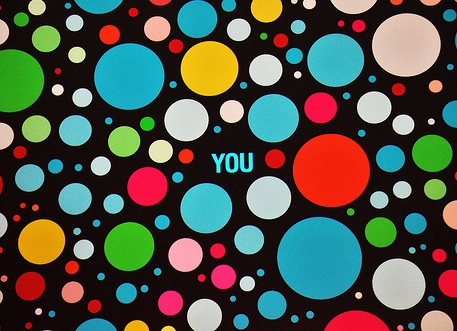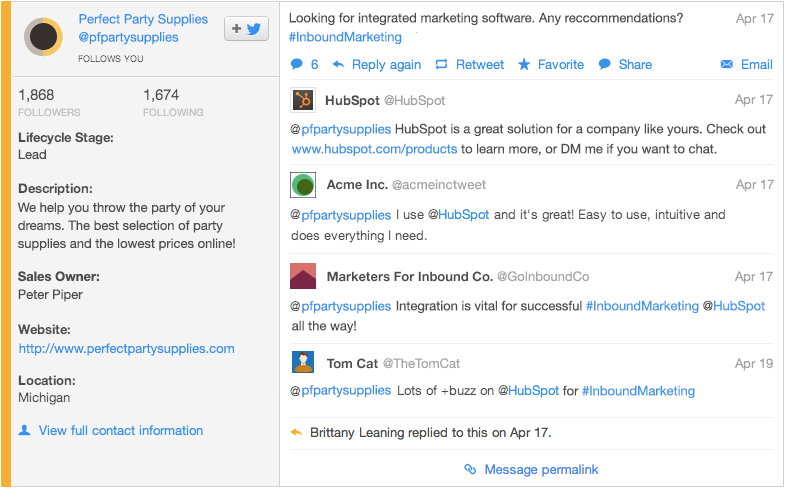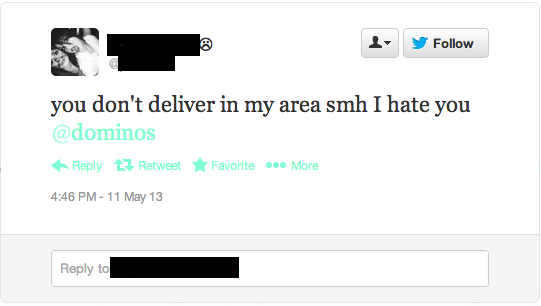 Remember when social media was social? Now, among the deluge of complaints, emoticons, and spam, individuals and businesses alike now find it nearly impossible to find and manage those one-to-one conversations that matter. Instead, social media strategies have become automated, impersonal, and actually contribute further to the exact problem they were put out there to solve for: streams of noise, shouting, and irrelevant messages.
Remember when social media was social? Now, among the deluge of complaints, emoticons, and spam, individuals and businesses alike now find it nearly impossible to find and manage those one-to-one conversations that matter. Instead, social media strategies have become automated, impersonal, and actually contribute further to the exact problem they were put out there to solve for: streams of noise, shouting, and irrelevant messages.Developing a people-centric social media strategy is a huge opportunity for companies to differentiate themselves from their competitors. A seemingly “faceless” brand making a personal connection over social media is such a rarity, that when it does happen, the resulting positive emotion from the recipient is remarkable in comparison to the avalanche of noise out there.
But is that really scalable? Should we even care about scale when it comes to social media marketing? Can it be both, or is that a pipe dream we should all just abandon?
The Problem With Using Automation to Scale Social Media Marketing
The first step to scaling a social media strategy is often automation. And while automation can be great for spreading your message across your various social media platforms in an efficient way, it’s usually not how you engage in a personal, one-to-one conversation.
When, for instance, Justin Timberlake tweets that he “Loves each and every one of his fans!!” I don’t really get that warm, fuzzy feeling as if he’s talking to me personally.
Now, if he tweeted at me specifically giving me kudos on the love letter I emailed him back in ‘01, well, that would be a completely different story. Not only would I be thrilled that this person I adore is contacting me individually, I’d be extremely impressed that he pulled in actual details from the interactions we’ve had in the past (albeit these interactions have been mostly, well, completely one-way.)
The Easiest Way to Scale Social Media Is Around People
Have Messages Come From a Real Person
You see, your company is a living, breathing entity, made up of many people and departments. Your most important relationships to manage are with your prospects, leads, and customers, and social media is a rich, nutritional resource for fostering these relationships. Social media is meant for messages from the real people in your company, to the real people out there on the internet.
So then, you may ask yourself, how can I scale my social media and still keep it personal? The solution is sort of obvious: have your social media efforts come from a real person. What’s more personal than that? “Well, Lia,” you might be thinking, “that sounds pretty obvious, but I don’t have unlimited resources, and I can’t hire as many social media managers as I’d like.” That, my friend, just may be a blessing in disguise ...
Have Messages Come From the Right Person
This personal social media strategy not only becomes scalable, but becomes much more effective when you distribute the responsibilities of your entire social media strategy across the various departments of your organization, to the most relevant people. At any given time, you have people in every part of your funnel. Marketing wants to hear from prospects. Sales wants to know what their high quality leads are saying. Customer Service needs to know what issues actual, paying customers are facing.
These individual people, or the folks on those teams, are the highest authorities in your company to interact with their given segment of your funnel, and should be the ones on social media engaging in conversations with their specific audience.
Every Department Needs a Social Media Strategy
Start by identifying the departments that will play a role in your social media strategy, what their goals in participation are, and help them customize their social media feeds to satisfy those goals. Here are three examples of the people you can delegate your social media responsibilities to in order to scale a more personal social media strategy.
Who: Social Media Manager
Goal: Find and Attract Prospects
Your social media manager can’t manage every potential prospect, blog subscriber, lead, opportunity, and customer -- and even if he or she can now, as your reach grows, it will become untenable. Instead, your social media manager should prioritize those people who aren’t already in your contacts database, and focus on delivering them the kind of helpful content and experiences that will encourage them to convert on an offer. To set up your social media manager's monitoring stream, you would want to focus on terms around the keywords you’re already targeting in your SEO strategy, mentions of your competitors, your industry, and of course, mentions of your company itself.
I'm also a believer that there should be one DRI -- directly responsible individual -- for everything, so your social media manager may be the person who you elect to be responsible for triage. This means anything that falls through other people's monitoring streams and needs to be escalated would fall on this person's plate.
Who: Sales Representative
Goal: Address the Needs of High Quality Leads
In order for your sales reps to get the most out of social media, they need to be able to sift through their feeds in order to find messages from leads they’ve already engaged with. This requires creating lists based off of your contacts database or CRM to monitor in your social media feeds. HubSpot’s latest tool, Social Inbox, does this by pulling the same segmented lists you would use to send personalized emails, allowing you to customize the keywords and terms that matter the most to your sales reps, and elevate those messages above the rest of the social media pandemonium.

Who: Customer Service Representative
Goal: Delight Customers
There's no worse feeling than when you’ve already handed over your money to a company, you begin experiencing frustration, and you can’t get in touch with a real person. By elevating your customers’ social media messages above the rest of the messages flooding your feed, your customer service representatives can nip a problem in the bud, filling your social media feeds with more :) and less >:( . Even better than this would be taking your communications a step further and entering your customer into a campaign that will check up on them again in a few weeks to see if any of their problems have escalated further. If your social media monitoring tool is integrated with your contacts database and marketing automation tool, this process is seamless and efficient.
Does a Person-Centric Social Media Strategy Really Push Your Business Goals Forward?
Of course, the ultimate goal is to get your content in front of the right people in order to drive them from stranger, to customer, to a promoter of your brand. But when push comes to shove, people want to do business with other humans, not machines who automate content sends. In fact, if you browse social media today for mentions of those classic, large, “faceless” brands, you’ll see a whole lot of negativity from people, and not a whole lot of love.

Conversely, when your company conducts itself on social media as a real person who listens, reacts, and responds like a human being, your company gets treated like a ... well, like a human being. If your audience knows that there’s a real person on the other side of the screen, they’re far more willing to give positive or constructive feedback, as opposed to ruthlessly blasting your company on social media for a minor inconvenience. Not only that, they’re more likely to relate to your company, and ultimately, choose to do business with you.
